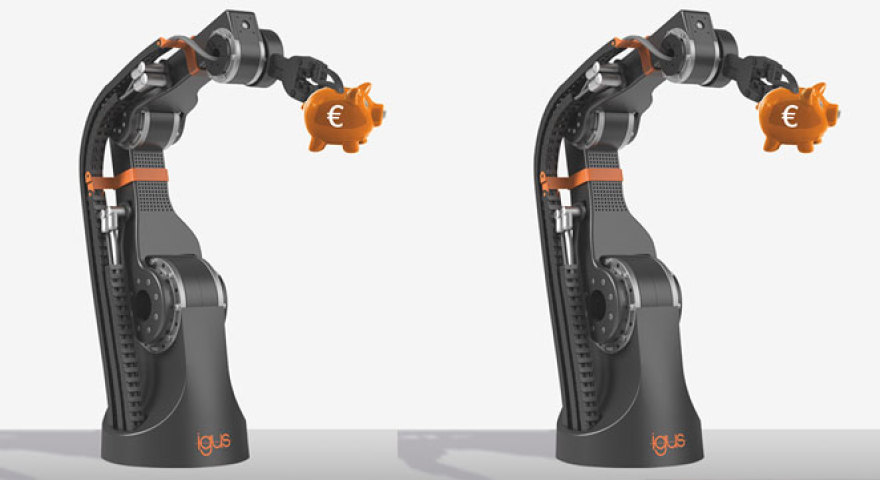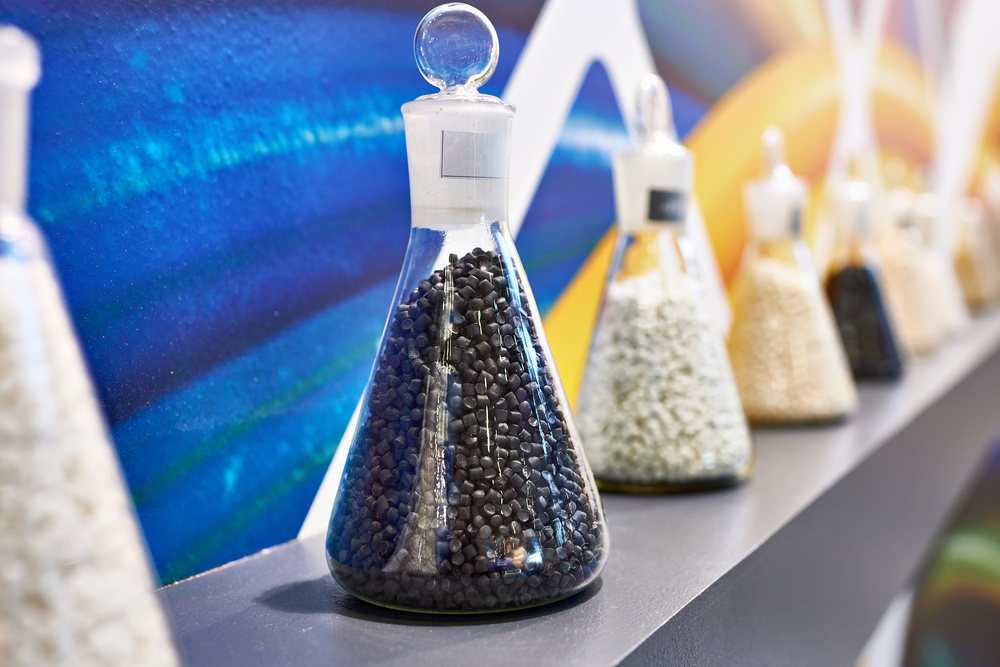Plastics extend their reach

Tell us about your business.
We are in the habit of saying that you can find us in any machine that moves. In fact, we design parts used in all types of machines. Although most of the parts that we manufacture are not necessarily visible, they provide a major contribution to the effectiveness of the machine in which they are installed. For instance, our bearings - which are tubes in which an axle is inserted, helping it to rotate - have been present in machines for centuries, but until the 1960s, they were made from metal and required regular lubrication in order to reduce wear. Capitalising on the "boom" of plastics and injection-molding, Günter Blase, a young German entrepreneur, came up with the idea of creating a bearing made from plastic. The aim was to overcome the constraints of metal by using a modern material requiring no maintenance and able to withstand wear.
It was an instant success. And since 1964, igus has continued to innovate on a regular basis by closely investigating the possibilities offered by polymers. There is a reason for which our slogan is: "Plastics for life".
What types of parts do you currently manufacture?
 Our catalogue contains close to 100,000 items! The core of our market is made up of parts that are subjected to high amounts of friction such as ball joints and various types of bearings. Our components are all designed using different polymers. They are affordable materials that require no maintenance and are long-lasting. The latter point is crucial, and it is our strength. For the past few years, we have enjoyed a good reputation for the quality of our cable carrier chains. They are parts designed to protect a cable connecting mobile components. This flattering reputation is no coincidence as all of our parts are tested over the course of hundreds of hours before being sold. Here's an anecdote: we noticed that our cable carriers were more durable than the cables they were protecting. This was a problem that we resolved by developing our own cable jackets using a polymer of our design.
Our catalogue contains close to 100,000 items! The core of our market is made up of parts that are subjected to high amounts of friction such as ball joints and various types of bearings. Our components are all designed using different polymers. They are affordable materials that require no maintenance and are long-lasting. The latter point is crucial, and it is our strength. For the past few years, we have enjoyed a good reputation for the quality of our cable carrier chains. They are parts designed to protect a cable connecting mobile components. This flattering reputation is no coincidence as all of our parts are tested over the course of hundreds of hours before being sold. Here's an anecdote: we noticed that our cable carriers were more durable than the cables they were protecting. This was a problem that we resolved by developing our own cable jackets using a polymer of our design.
Can you tell us about those polymers?

No, because we never disclose any information about the polymers that we use, whether or not we developed them ourselves. This is a trade secret which is carefully kept. This is also why we never file for patents when we develop a new polymer, because we know that our competitors would be able to examine the patent and legally transform the nature of our materials by adding something here and there. We would have no way to remedy this in court, and they would profit from the years of research that we’ve financed. All I can say is that we strongly believe in continuous improvement and we have always sought to develop plastics optimised to withstand wear as a result of friction. In our jargon, we have even given them a name: triboplastics. For instance, our universal bearing called the iglidur G has existed for 30 years. It is the most used of all our bearings and certainly represents the most comprehensive range in the world.
This year, we unveiled the iglidur G1 which has around twice the life span at an almost identical price. This new material will soon be included in our lifetime calculator, which is freely accessible on our website. However, you should know that we test around five hundred new polymer blends every year.
There is a lot of talk about your robolink® articulated arm. How did you come to embark on such an adventure?
In a way that perfectly encapsulates our innovation policy! We came up with the idea of extending our know-how by creating an articulated arm. This is not a prosthesis, but rather a machine able to move an object from point A to point B. In the beginning, we had aimed to use polymer threads to act as tendons. We quickly noticed that we were on the wrong path, and that the solution required motors to be incorporated into the arm's body. It took five years of development to intelligently manage all of the electromechanical parts, and, in particular, to find the right polymers, as the joints and the drive systems are mainly made from plastics, and that is a first !

Precisely. The fact that it is made from plastic can come as a surprise.
 Yes, but it all depends on what you want to do with it. We aim for a low-cost position in the market, in the noblest sense of the word. Like current practices in the automotive industry, we have developed an arm that will meet the requirements of many manufacturers, because not everyone needs a race car. Our arm is robust, easy to use and maintain, modulable, and has good capabilities as it can lift up to five kilos and is precise to the millimetre. Finally, and this is the most decisive factor, robolink® is the most affordable robotic arm on the market for such a high level of performance. It is four to ten times less expensive than those of our competitors. I would even go a little further, as I believe that it is by designing this type of robust, reliable and accessible equipment that the reindustrialisation of Europe can be brought about. In some fields, the main obstacle is the required investment rather than labour costs.
Yes, but it all depends on what you want to do with it. We aim for a low-cost position in the market, in the noblest sense of the word. Like current practices in the automotive industry, we have developed an arm that will meet the requirements of many manufacturers, because not everyone needs a race car. Our arm is robust, easy to use and maintain, modulable, and has good capabilities as it can lift up to five kilos and is precise to the millimetre. Finally, and this is the most decisive factor, robolink® is the most affordable robotic arm on the market for such a high level of performance. It is four to ten times less expensive than those of our competitors. I would even go a little further, as I believe that it is by designing this type of robust, reliable and accessible equipment that the reindustrialisation of Europe can be brought about. In some fields, the main obstacle is the required investment rather than labour costs.
And who is it intended for?
 Almost everyone. Of course, most of our customers are manufacturers. We recently launched a project aimed at adding our arms to an office chair assembly line. That being said, many technical colleges and engineering schools are increasingly interested in the arm as it is a fairly affordable way to train their students in robotics. In a short while, we will be able to "reach" individuals who may want to play around with a beautiful toy. This is not a pipe dream, as who could have predicted that 3D printers would one day be within the reach of individuals just a few years ago? This arm can be used in many applications for those who are interested in robotics and computing. Robolink® could conceivably become the ideal partner for a young chess enthusiast, for instance. This is just one of myriad ideas. For the remainder, I am fully confident that the imaginations of our future customers in close to eighty countries will do the rest..
Almost everyone. Of course, most of our customers are manufacturers. We recently launched a project aimed at adding our arms to an office chair assembly line. That being said, many technical colleges and engineering schools are increasingly interested in the arm as it is a fairly affordable way to train their students in robotics. In a short while, we will be able to "reach" individuals who may want to play around with a beautiful toy. This is not a pipe dream, as who could have predicted that 3D printers would one day be within the reach of individuals just a few years ago? This arm can be used in many applications for those who are interested in robotics and computing. Robolink® could conceivably become the ideal partner for a young chess enthusiast, for instance. This is just one of myriad ideas. For the remainder, I am fully confident that the imaginations of our future customers in close to eighty countries will do the rest..





